5 Strength Moves for Pain-Free Pedalling
Strengthen the muscles that support your riding habit to avoid aches, pains, and fatigue in the saddle.
Strengthen the muscles that support your riding habit to avoid aches, pains, and fatigue in the saddle. – By Selene Yeager
Skater Step Up
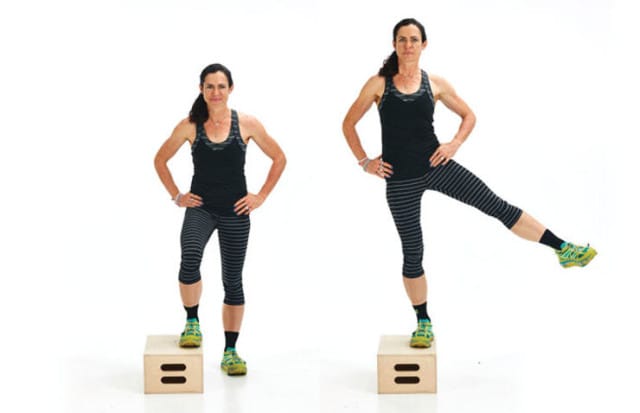
There’s a reason speed skaters make such good cyclists: They’ve got amazing lower-body stability and strength. Steal a move from their playbook with the skater step up. This move asks you to work one leg at a time, which helps develop balanced strength (most of us have one side that is stronger). It also fully activates and develops your glutes, so you sit rock-solid in the saddle and become less prone to side-to-side rocking—and the back and knee pain that can follow.
Do it: Stand next to a box, or step with one leg bent and foot planted on the box. All in one move, straighten the bent leg, lifting your body up while swinging the other leg out to the side as high as comfortably possible. Return to the starting position. Do 10 reps. Switch sides.
Flip Side Snow Angels
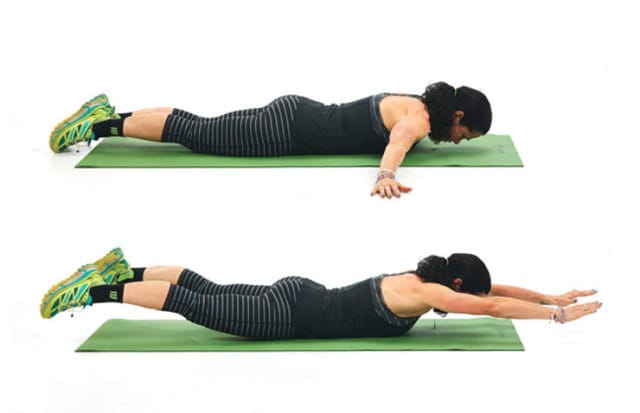
Cyclists spend a lot of time sitting in a hunched aero position—at desks, at tables, over our phones, behind the wheel, and ultimately behind our bars. That leaves our back muscles stretched, weak, and vulnerable to pain and fatigue whenever they have to support you and transfer power from your arms to your legs during cycling. This move targets your entire back.
Do it: Lie facedown, arms extended at your sides. Squeeze your glutes and slowly lift your feet, chest, and hands no more than six inches off the floor. Sweep your arms overhead and separate your feet. Try to touch your hands above your head. Return to the start position, relaxing your feet, chest, and arms. Do 15 reps.
Rock the Boat
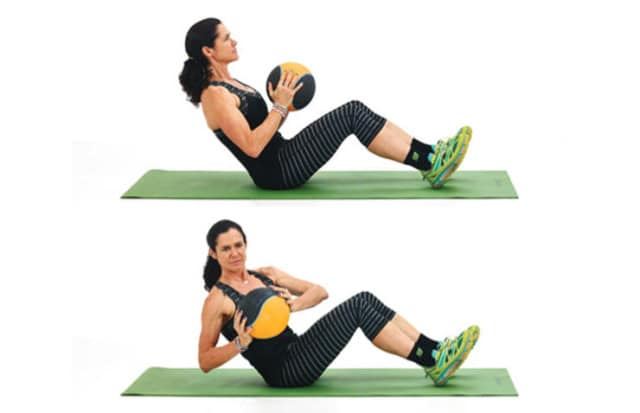
Your obliques (side torso) muscles are responsible for rotating your trunk, or in the case of cycling, minimizing that rotation as your legs pedal up and down. When they’re weak, you are susceptible to too much lateral torsion (twisting) and aches and fatigue as well as wasted watts. This move strengthens those often-overlooked core muscles.
Do it: Sit on the floor while holding a medicine ball in both hands, with shoulders relaxed, elbows bent, and arms pulled close to the sides of the body. Place your knees and feet about hip-width apart, heels on the floor, knees bent, and back straight. Pull your abs in tight and, with a straight back, lean back from the hips until you feel your abs engage. Keeping heels on the floor and arms close to your body, twist from the waist to the left side. Twist back to the center starting position. Twist to the opposite (right) side. Return to the starting position to complete one rep. Continue alternating sides for 10 reps.
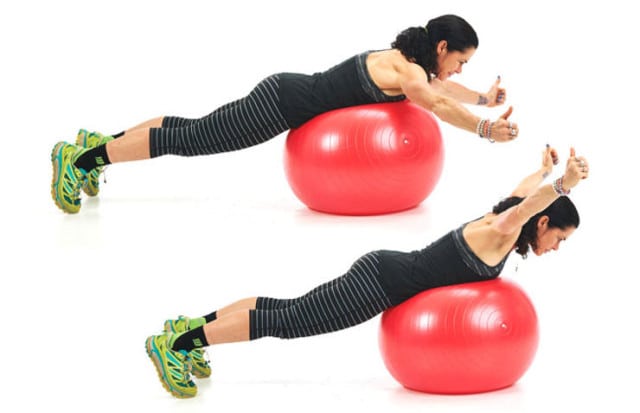
Y Raise
Your lower trapezius muscles (which frankly few of us ever target in the gym or elsewhere) help stabilise your shoulders by keeping them back, which not only gives you pretty posture, but also helps prevent shoulder and neck pain that can follow when those supporting muscles are weak. This easy trap-targeting move is best done on a large inflated stability ball, but it works fine on the floor, too.
Do it: Lie facedown with your arms straight overhead and slightly outward so your body forms a Y shape. Clasp your hands and point your thumbs toward the ceiling. Keeping your arms straight and in the Y shape, lift your arms (but not your head and neck) up as far as comfortably possible. Lower to start. Do 10 reps.
Kettlebell Swings
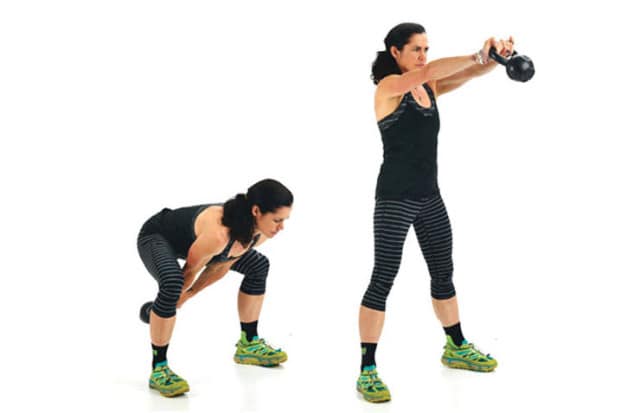
Efficient muscles are smooth-working muscles that are able to synchronize their efforts without unnecessary movement during your pedal stroke. Efficient muscles also generate more power with less effort and protect you from fatigue, injury, and subsequent pain. Not much makes your muscles more efficient than the classic kettlebell swing. This move also develops strong hip and core muscles, which protect your back as you power down the road.
Do it: Stand with feet wide apart, holding a kettlebell with both hands, arms hanging down in front of you. Keeping your back straight, squat back, pressing hips way back and swinging the kettlebell between your legs and behind your hips. Stand up, pressing your hips forward and swinging the weight up to chest level. Do 15 reps.
READ MORE ON: injury-prevention strength training programmes workouts

